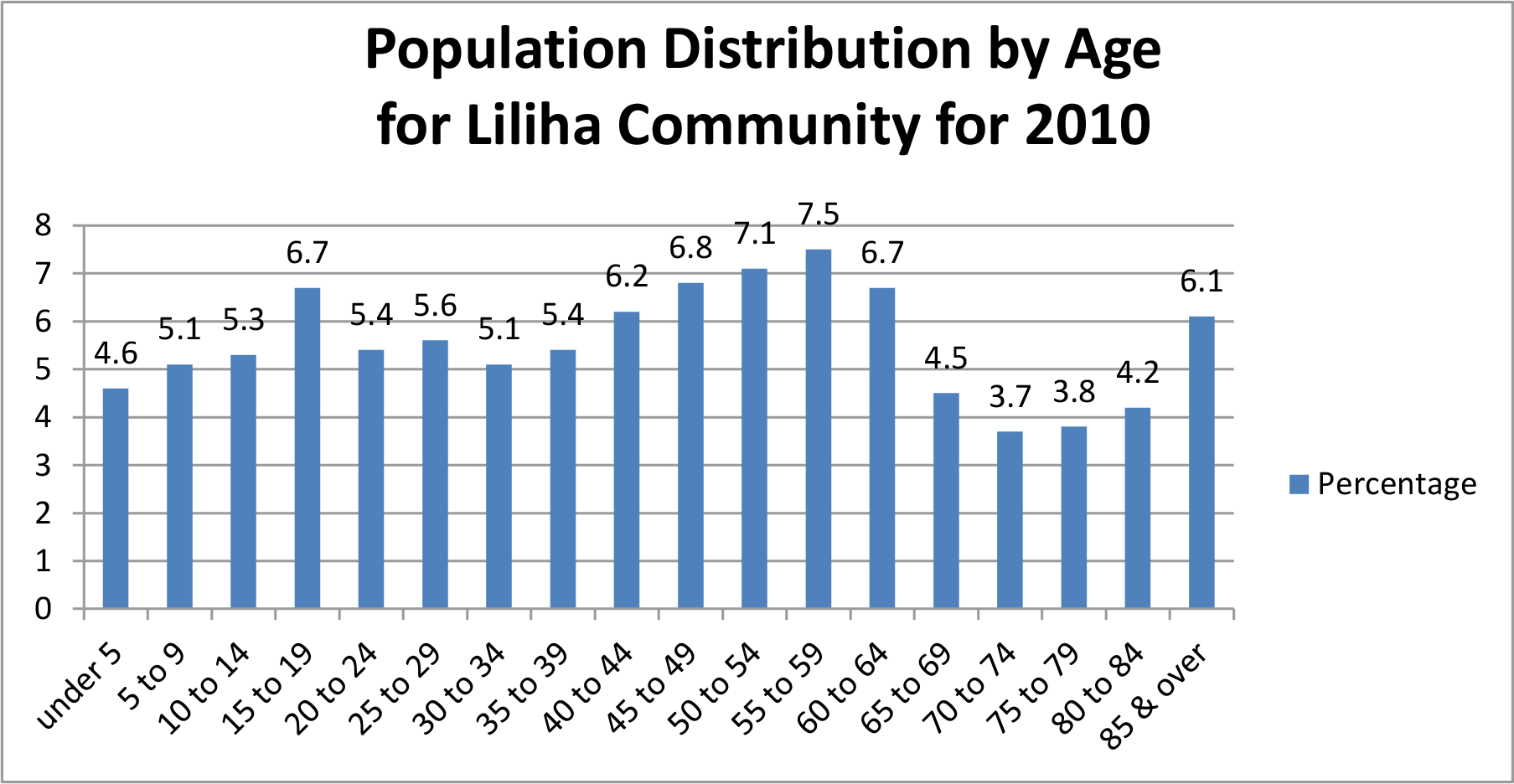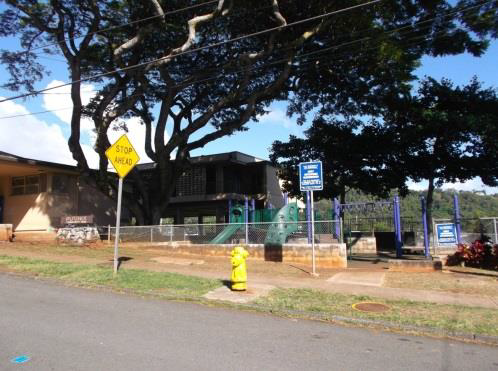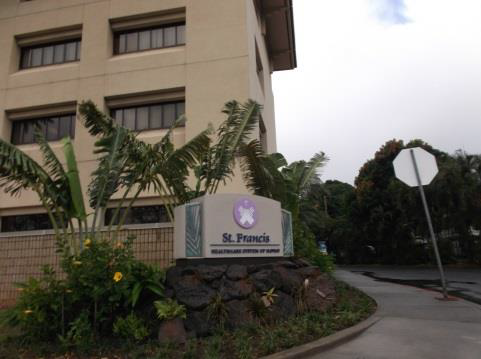
Historically, the name of “Liliha” comes from the name of “Kuini Liliha (1802-1839) was a High Chiefess in the ancient Hawaiian tradition and served the Kingdom of Hawaii as Royal Governor of O’ahu island. She administered the island from 1829 to 1831 following the death of her husband.” (Wikipedia, 2013).

Methodology
The Liliha/Puunui/Alewa/Kamehameha Heights community was selected as a pilot study site. The process took several months to complete. After interest from the community was confirmed, an open public gathering (Kick Off) was held to inform residents, stakeholders, and interested community members about the HI-CFL project. A workshop was conducted specifically for residents to provide instruction on utilizing Mapping Attributes: Participatory Photographic Surveys (MAPPS) to survey features of their community by photographing and geocoding place-based characteristics. Upon completion of MAPPS, the volunteer photographers reviewed all photos and determined which illustrated significant features of their neighborhood applying the WHO physical social, and service environments. All community members were invited to attend a Community Conversation to view selected photos, discuss, and suggest ideas for how the Liliha community could become a community for a lifetime. The last data collection occurred at the annual “I Love Liliha” event where a photo display of the MAPPer selected pictures was presented so that attendees could express their opinions.
Between July 2013 and August 2013, a total of 45 individuals (189 cumulative participants) including Liliha residents and stakeholders (e.g., Neighborhood Board members, State officials, City officials, AARP, social service agencies, etc.) participated in this Liliha CFL Project. The following four meetings were conducted at the Lanakila Elementary School Cafeteria. Also, a Liliha CFL Project photo display was presented at the “I Love Liliha” annual event.
Date
|
Meeting |
Number of Attendees
|
July 9, 2013
|
Kick Off
|
33 |
July 16, 2013
|
MAPPer Workshop
|
14 |
July 30, 2013
|
MAPPer Discussion
|
11 |
August 13, 2013
|
Community Conversation
|
31 |
August 25, 2013
|
I Love Liliha
|
100 |
Illustration of LIliha MAPPS Routes

Summary of Results
With the limited number of persons involved in the project, the information provided in this Report may not reflect the views of the community as a whole. However, it offers an initial scan on the age-friendliness of the Liliha Community.
I. Physical Environment
 At the Community Conversation, 66% of the participants disagreed with the statement, “Liliha has a physical environment that supports physical and mental health behaviors”. The Liliha/Alewa community has much to offer in terms of outdoor spaces such as public parks and school playgrounds which make it easy to be socially and physically active. This is off-set by the challenge of being able to access those places. Walkability was an identified issue for people of all ages and abilities as good sidewalks are lacking on major thoroughfares and connecting streets. In addition, alternative non-motorized vehicle transportation options (e.g., bike lanes) were non-existent.
At the Community Conversation, 66% of the participants disagreed with the statement, “Liliha has a physical environment that supports physical and mental health behaviors”. The Liliha/Alewa community has much to offer in terms of outdoor spaces such as public parks and school playgrounds which make it easy to be socially and physically active. This is off-set by the challenge of being able to access those places. Walkability was an identified issue for people of all ages and abilities as good sidewalks are lacking on major thoroughfares and connecting streets. In addition, alternative non-motorized vehicle transportation options (e.g., bike lanes) were non-existent.
When asked about the statement, “In Liliha, people of all ages have access to various forms of transportation”, 76% of the participants agreed. TheBus system helps Liliha residents with mobility and independence. If a person qualifies, the Handi-van is also available for people who require specialized transportation. Participants felt that restoration of recently eliminated Bus routes would enhance their ability to navigate the community without resorting to driving a vehicle.
The majority of participants (70%) disagreed with the statement, “Outdoor spaces and building design in Liliha support mobility and independence”. Current street conditions generated much concern for Liliha residents. There are a variety of conditions that people readily identified which hinder their safe navigation around the community. These include poor road surfaces, numerous pot holes, faded traffic lines, narrow streets, unexpected street level heights, poor placement of utilities or storm drains, inadequate lighting, poor or lack of signage, short length of traffic light signals for older pedestrians, and a variety of many other physical obstacles.
 Participants felt that the traffic calming system in place on Lanakila Ave. allows for a safer and slower flow for vehicles and pedestrians alike. These techniques could also be used at other major thoroughfares, such as Liliha Street and Nuuanu Avenue where there is a lot of speeding and mixed traffic. For safe travel of vehicles and pedestrians more lights could be installed. Personal responsibility was also discussed in regards to safety and current traffic policies.
Participants felt that the traffic calming system in place on Lanakila Ave. allows for a safer and slower flow for vehicles and pedestrians alike. These techniques could also be used at other major thoroughfares, such as Liliha Street and Nuuanu Avenue where there is a lot of speeding and mixed traffic. For safe travel of vehicles and pedestrians more lights could be installed. Personal responsibility was also discussed in regards to safety and current traffic policies.
There are numerous small to large businesses in Liliha. If walkability and/or non-motorized vehicle transportation issues are not improved, it forces people to depend on cars. To support these businesses, more parking will be necessary.
Slightly more of the participants (74%) also disagreed with the statement, “All Liliha residents have access to affordable, accessible housing options”. Because of Liliha’s great location and assets, it is a desirable place to live in Honolulu. Unfortunately, there is limited affordable housing. The apartment rent is high and the dwelling space is small. Luckily some families are able to pass ownership from generation to generation. The ‘Ohana type housing was suggested as a viable an option.
II. Social & Cultural Environment
 A slight majority (69%) of the participants agreed with the statement, “Liliha supports active involvement, social and cultural participation, and intergenerational connectivity among all residents”. There are a variety of resources for social participation and socialization for all ages. There are many parks, mom & pop stores, restaurants, schools, places of worship, senior center, etc. that provide opportunities. But, no matter how plentiful, a person needs to know what they are in order to participate in them.
A slight majority (69%) of the participants agreed with the statement, “Liliha supports active involvement, social and cultural participation, and intergenerational connectivity among all residents”. There are a variety of resources for social participation and socialization for all ages. There are many parks, mom & pop stores, restaurants, schools, places of worship, senior center, etc. that provide opportunities. But, no matter how plentiful, a person needs to know what they are in order to participate in them.
The participants were split 50/50 with the statement, “People in Liliha have access to social networks and social participation”. There are many resources in the community, such as schools, churches, parks, community groups, etc. where people can socialize and become physically active. But, a lack of knowledge prevents from them from participating in community activities and this creates isolation. There are also some physical barriers that hinder people from attending events. Some areas do not have sidewalks to safety reach the events and sometimes a vehicle is necessary to get there.
Most of the participants (56%) disagreed with the statement, “Liliha residents have opportunities to contribute their skills, knowledge, and time to support the economic prosperity”. Opportunities for volunteer work and employment are available throughout this community. Unpaid positions include the neighborhood board, parks, boys and girls scouts, senior center, and schools. Full and part-time employment opportunities are available with small and large businesses, social service and non-profit organizations, as well as government.
III. Service Environment
 Participants were asked whether “People in Liliha are well-informed and are able to obtain relevant information on programs and services in the community”. The majority (81%) of the participants disagreed with this statement. An effective communication system needs to be developed that is accessible to everyone and effectively reaches all residents regardless of age or abilities. There are many programs, but information is not shared between groups or communicated to the residents-at-large. For example, an individual organization’s community events notices are available only to those involved in their group. Many others could possibly take advantage of the opportunity had they known about it. In order to enhance community participation and prevent social isolation, publicity and outreach to a greater variety of individuals and groups needs to be improved. Organizers also need to remember that not all residents, especially older adults, have access to or utilize computers.
Participants were asked whether “People in Liliha are well-informed and are able to obtain relevant information on programs and services in the community”. The majority (81%) of the participants disagreed with this statement. An effective communication system needs to be developed that is accessible to everyone and effectively reaches all residents regardless of age or abilities. There are many programs, but information is not shared between groups or communicated to the residents-at-large. For example, an individual organization’s community events notices are available only to those involved in their group. Many others could possibly take advantage of the opportunity had they known about it. In order to enhance community participation and prevent social isolation, publicity and outreach to a greater variety of individuals and groups needs to be improved. Organizers also need to remember that not all residents, especially older adults, have access to or utilize computers.
Participants also agreed (81%) with the statement, “In Liliha, community supports and services (including health services) are available and accessible to all residents”. Residents felt that anything they need can be found from the mountain to Vineyard Boulevard. There are all types of community and health services in this community, such as schools, parks, hospitals, cemeteries, places of workshop, restaurants, supermarkets, social services, library, elder care facilities, financial institutions, and pharmacies.
What Does an Age-Friendly Liliha Community Look Like?
Participants in the Liliha CFL project felt that in general Liliha is age-friendly and a great place to live, but improvements can make it better. Here are their suggestions:
Physical Environment
- There will be a central point of pride.
- There will be lots of shade trees.
- There will be places to sit at parks and street corners.
- There will be a lot of places for kids to play and people to socialize.
- You will be able to walk everywhere, not just on the main connected streets. Sidewalks would be connected without obstacles. Crosswalks will be ADA compliant.
- Restored bus stops will allow people to access desired assets of the community.
- Streets will be safe to navigate at any time of the day.
- More housing options will be provided to the Liliha residents, such as senior housing.
- Increased economic development and affordable housing could be provided by building more multiple-use buildings. For example, businesses could be on the first floor and housing could be on the second floor.
- A neighborhood watch could create a tight knit community and provide for safety.
Social Environment
- Everyone can participate in this community because a lot of community spaces will be available.
- There will be a multitude of community organizations to support the youth, families, young and older adults.
- Intergenerational activities will support and encourage the local values of caring for multiple generations (e.g., extended family ‘Ohana.)
Service Environment
- An effective community system utilizing mixed methods promotes all events in Liliha, so that people have options to participate.
- A community bulletin board, signage, banners, flyers, etc.
- A website to learn about all services and social activities.
- There is a wealth of diverse health and community services in Liliha.
- There are good educational services from preschool to high school.
- Schools could be hubs used by schools as well as for community events.
- Churches have activities for all ages.
- The diversity of health services continues to be excellent.
- Small to large businesses continue to provide a variety of services to our residents.
What are the Priorities in Creating an Age-Friendly Liliha?
- All parks need places to sit. This creates more opportunities for socialization among residents of all ages.
- Transportation options needs to be designed for all users. Complete Streets is one option to be seriously considered.
- Building mixed use buildings (commercial and residential combination) could create affordable housing options.
- Information and knowledge network, promotion and outreach efforts need to be established through multiple sources, such as website, newsletters, signage/banners, etc. in order for all residents regardless of age or abilities to know about community events.
- An open drop-in center for all ages could be an ideal place for residents to participate in social events. Existing buildings or schools in the community could be used for these kinds of purposes. The center could support multiple uses, such as gym (physical), café (service), and intergenerational (social) activities.
- Welcoming sign at Liliha off of H-1 freeway could create an immediate recognition of the community upon entering.
Acknowledgements
A special thanks to AARP Hawai’i for co-sponsoring all the Liliha CFL events and Dr. Deborah John of the Oregon State University Extension Service for sharing engAGE in Communities project as well as providing training and technical assistance to develop HI-CFL. We also would like to thank to the following people for their contributions: Neighborhood Board No.14 members, MAPPers (Peter Bowman, Tyler Dos Santos-Tam, Max Fowler, Michelle & Trae Hashimoto, Joyce Ho, Archie Lardizabal, Edmund & Karen Lee, Matthew Sahara, Robert Stubbs, Edith Tomei, and Bertha Tomiyasu), Ramona Mullahey, Diane Terada (Catholic Charities), and Chris Wong (Lanakila Pacific).
References
John, D.H. & Gunter, K. (2012). engAGE in Community, Northwest Public Health, 29, 10-11.
John, D.H., Gunter, K.B., Etuk, L., & Trost, K.K. (2012). GROW Healthy Kids and Communities HEAL MAPPS™ Toolkit Manual. Corvallis, OR: Oregon State University.
Neal, M.B. & DeLaTorre, A. (2007). The World Health Organization’s Age-Friendly Cities Project in Portland, Oregon Summary of Findings
U.S. Census (2010). Demographic Profile (Oahu tract 46 through 50). Retrieved September 3, 2013 from http://files.hawaii.gov/dbedt/census/Census 2010/demographic/demo profile ct Oahu/2010dp ct46.pdf
Wikipedia (2013). Kuni Liliha. Retrieved October 10, 2013 from http://en.wikipedia.org/wiki/Kuini_Liliha
World Health Organization (2007) GlobalAge-Friendly Cities: A Guide
World Health Organization (2007) Checklist of Essential Features of Age-Friendly Cities
This report was generated by Pamela Chow and Seiko Sato, University of Hawai‘i at Mānoa, College of Tropical Agriculture & Human Resources, Department of Family & Consumer Sciences, Cooperative Extension Service. It has been funded in part by a USDA Hatch Grant. Rev. 10/08/14
Download this Report